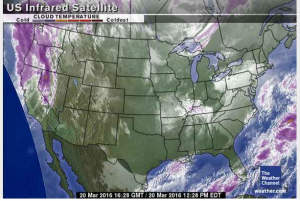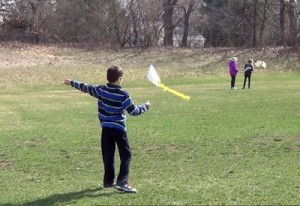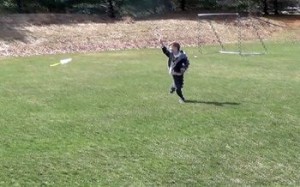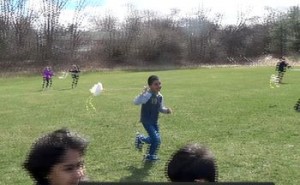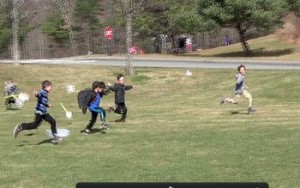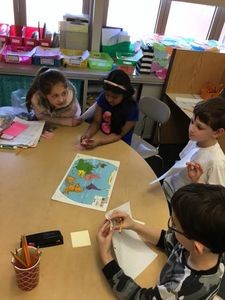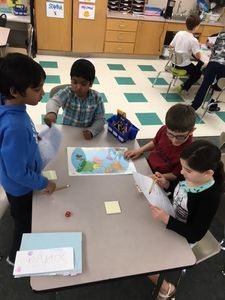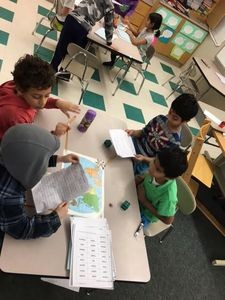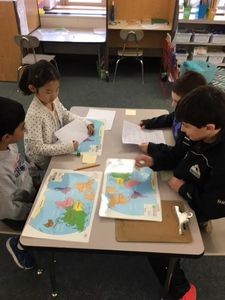Posted by kavery508 | Posted in Uncategorized | Posted on March 21, 2016
 Literacy Night is coming on Friday, April 8th! This annual school event features games, books, local authors, food, and more. A favorite feature of this event is the reading of original pieces by student authors. I encourage any student from our class to participate. If your child wishes to read his/her writing (in classrooms with a group of about 9 other students), here’s what to do: 1. Select a piece of writing from home or school this year (think of the great work they’ve done with Opinion, Informative, and Narrative writing! or something they’ve worked on at home). 2. Send it in for me to OK anytime this week. 3. I’ll send it back with any suggestions for polishing. 4. You’ll be sent a permission form, followed by a confirmation letter with room assignment and time. 5. Come and celebrate! Students begin presenting at 6:00 PM.
Literacy Night is coming on Friday, April 8th! This annual school event features games, books, local authors, food, and more. A favorite feature of this event is the reading of original pieces by student authors. I encourage any student from our class to participate. If your child wishes to read his/her writing (in classrooms with a group of about 9 other students), here’s what to do: 1. Select a piece of writing from home or school this year (think of the great work they’ve done with Opinion, Informative, and Narrative writing! or something they’ve worked on at home). 2. Send it in for me to OK anytime this week. 3. I’ll send it back with any suggestions for polishing. 4. You’ll be sent a permission form, followed by a confirmation letter with room assignment and time. 5. Come and celebrate! Students begin presenting at 6:00 PM.
 Our reading focus this week is on using the comprehension strategy Determining Importance. In nonfiction texts, authors use titles, subtitles, and headings as clues to their main ideas. Using a variety of texts, students will read the supporting details of an author’s argument. Then, they will sort out interesting vs. important information using the headings and title to guide their thinking. You can try it out at home, too! Visit a kid-friendly site like Time For Kids or National Geographic Kids; choose an article with headings; read the sections; and look for the main idea of each with the heading and title in mind. Here’s one example, about a new species of tree frog that looks just like Kermit: http://kids.nationalgeographic.com/explore/nature/new-real-life-frog-looks-like-kermit/
Our reading focus this week is on using the comprehension strategy Determining Importance. In nonfiction texts, authors use titles, subtitles, and headings as clues to their main ideas. Using a variety of texts, students will read the supporting details of an author’s argument. Then, they will sort out interesting vs. important information using the headings and title to guide their thinking. You can try it out at home, too! Visit a kid-friendly site like Time For Kids or National Geographic Kids; choose an article with headings; read the sections; and look for the main idea of each with the heading and title in mind. Here’s one example, about a new species of tree frog that looks just like Kermit: http://kids.nationalgeographic.com/explore/nature/new-real-life-frog-looks-like-kermit/
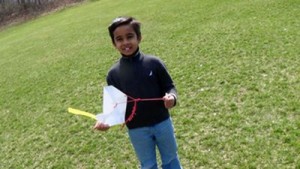 As we begin the last trimester of school, students will return one last time to narrative writing. What’s important by year’s end is that they write several paragraphs of a story from their lives that include an entertaining beginning; description; a main event that stretches out the moment; transition words; and an extended ending. It’s by far the most complicated writing they’ll do. This time around, students will write about a common experience we shared last week when we went outside to fly kites. We’ll walk step by step through the process together, while looking at examples of student work to guide us.
As we begin the last trimester of school, students will return one last time to narrative writing. What’s important by year’s end is that they write several paragraphs of a story from their lives that include an entertaining beginning; description; a main event that stretches out the moment; transition words; and an extended ending. It’s by far the most complicated writing they’ll do. This time around, students will write about a common experience we shared last week when we went outside to fly kites. We’ll walk step by step through the process together, while looking at examples of student work to guide us.
 This trimester, students will engage in skills-based math topics such as telling time, measuring in inches/feet, and more. We begin by learning fractions: what they are; how to name them; how to compare them, and how to add fractions with similar denominators. What’s important, according to the Common Core, is that students gain an understanding of what fractions mean and become fluent using halves, thirds, and fourths. Consider the example below. Notice how it encourages students to think about what fractions are and about their relative sizes. This picture and many more can be found in the Student Book accessible via the Math in Focus link above (Book B; Chapter 12). As always, hit me with any questions!
This trimester, students will engage in skills-based math topics such as telling time, measuring in inches/feet, and more. We begin by learning fractions: what they are; how to name them; how to compare them, and how to add fractions with similar denominators. What’s important, according to the Common Core, is that students gain an understanding of what fractions mean and become fluent using halves, thirds, and fourths. Consider the example below. Notice how it encourages students to think about what fractions are and about their relative sizes. This picture and many more can be found in the Student Book accessible via the Math in Focus link above (Book B; Chapter 12). As always, hit me with any questions! 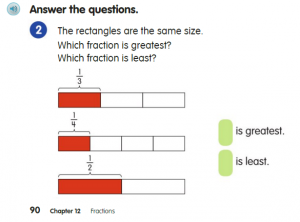
 In Social Studies this week, students will be taught to identify natural and cultural features on a map and will use them to understand place and much more. Natural features include land, water, air, and organisms; cultural features are anything put there by people, such as boundaries, roads, and buildings. Check out this picture from Weather.com. Synthesizing our understanding of map skills, we can see that a large cloud mass is moving up through the southern United States, while another one is moving from Canada to the north (where the air is always colder). It looks like they will move over parts of New England–better keep an eye on the weather!
In Social Studies this week, students will be taught to identify natural and cultural features on a map and will use them to understand place and much more. Natural features include land, water, air, and organisms; cultural features are anything put there by people, such as boundaries, roads, and buildings. Check out this picture from Weather.com. Synthesizing our understanding of map skills, we can see that a large cloud mass is moving up through the southern United States, while another one is moving from Canada to the north (where the air is always colder). It looks like they will move over parts of New England–better keep an eye on the weather!
Here’s some more kite pictures, plus a few more from our Great Global Map Skills Game with the Youngs:

